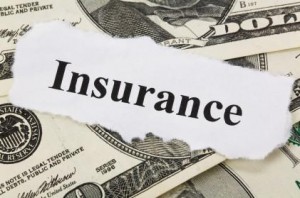Collision Insurance in Ohio – Do You Need It?
Insurance is sometimes a scary word, especially to people who are confused by the various terms that are involved. In addition to confusing words and phrases, the insurance that you need can become even more scary when you are forced to determine what level of coverage that you need. In Ohio, you must show that you are financially responsible when you become a licensed driver, which can simply be done with having a valid insurance policy in place.
One of the most common types of insurance coverage is collision insurance, which provides coverage in the middle ground. Liability insurance only covers for damage to other people’s vehicle or property but pays nothing for your own vehicle. 
Full coverage insurance is more security, covering the cost of your own vehicle as well as the other person’s vehicle and property damaged in an accident but can be very expensive to keep. Once a car is below a certain market value, it makes little real sense to keep the full coverage insurance on it. Ohio drivers may consider collision insurance to afford more protection without having to pay for full coverage on a car that is not really worth it.
Collision insurance is often the compromise solution. The major points of collision insurance include:
- Cash will be paid for damages to a covered vehicle for an accident in which you are determined to be at fault.
- Collision insurance will pay up to the market value of the car.
- It includes a deductible amount, which can either raise or lower your coverage amount.
- It is not required by law in any state in the nation but may be required in other circumstances.
- It may not fully cover the cost of replacement or repairs to your vehicle, especially in the case of a vehicle that is very expensive, has been greatly modified or needs a dramatic amount of repairs.
What Happens if You Need Additional Coverage?
If your vehicle is older but has been modified in a number of ways or has specialized equipment, you might not be satisfied with the coverage that you would get from just collision insurance. In addition, when you are leasing or financing the vehicle, you will be required to pay for collision insurance, but if the car is determined to be a total loss, you will still be required to pay the remainder of the loan on your own. In that case, you would benefit from having a secondary insurance policy called “gap insurance”
Gap insurance can be used to cover:
- Specialized, in dash audio equipment
- Lights and other accessories that are permanently installed in or on the vehicle
- Decals, specialized paint jobs or other details added to enhance the vehicle’s appearance
- Specialized equipment for mobility, such as wheelchair ramps or more
- Alarms or other security devices
Deductible 101: Determining the Right Amount for You
No one wants to be involved in an accident. No one plans on being in an accident; that is why they are called accidents. But, as insurance is necessary, it is best to get the best price possible on your coverage.
One of the easiest ways to change the cost of your insurance is by changing the amount of your deductible. By simply increasing the level of the deductible at the start of your coverage term, you will lower your insurance costs and give yourself lowered premiums.
Deductible costs can seem frightening, but if you never have an accident or loss, they are inconsequential.
If you are truly afraid of the cost of the deductible, it might be better to lower it slightly, but understand that it is going to raise the overall cost of your insurance.
How the collision insurance and deductible work:
- The vehicle is involved in an accident.
- Through investigation or admission, that accident is determined to be your own fault.
- The car’s damages are assessed and a cost is assigned, typically through estimates. Your insurance company may have a particular garage that they will send you to for repairs.
- The deductible amount will be paid by you directly.
- The insurance company will pay the remaining amount for the repairs.
- The insurance company will determine whether to reinsure the vehicle or not. If they do reinstate the policy, the coverage amount will likely increase because there has been a loss on the car.
If there is a loss that is beyond what the insurance will cover, you will be responsible for the remainder whether it is the cost of repairs to the vehicle or the amount paid to the finance company for a totaled vehicle. Gap coverage is your best protection in this case.











